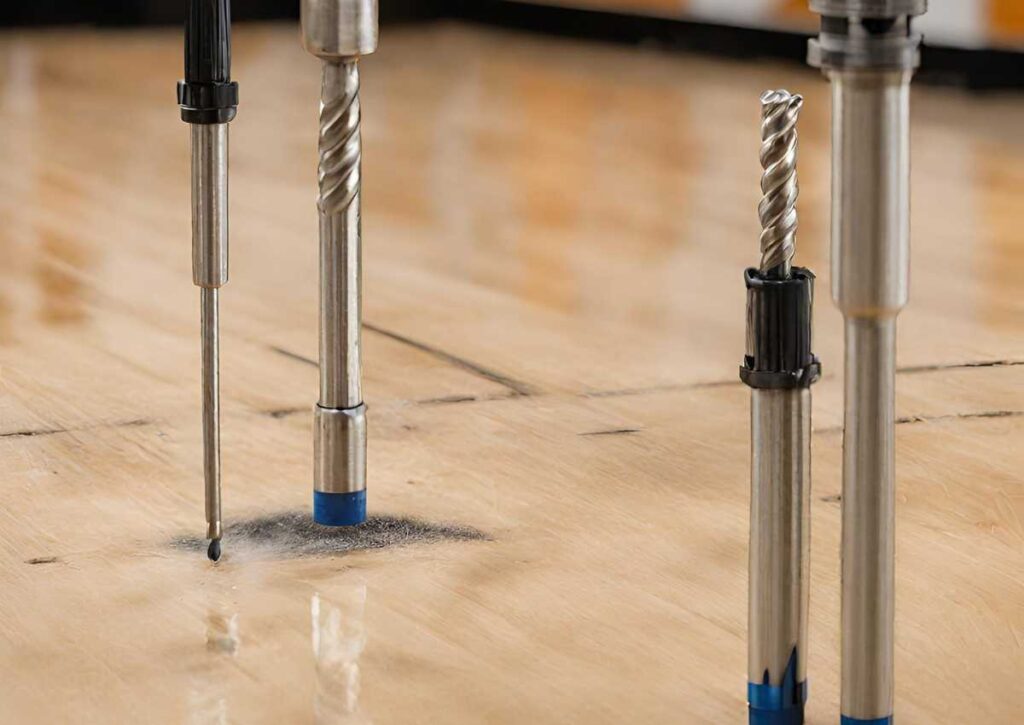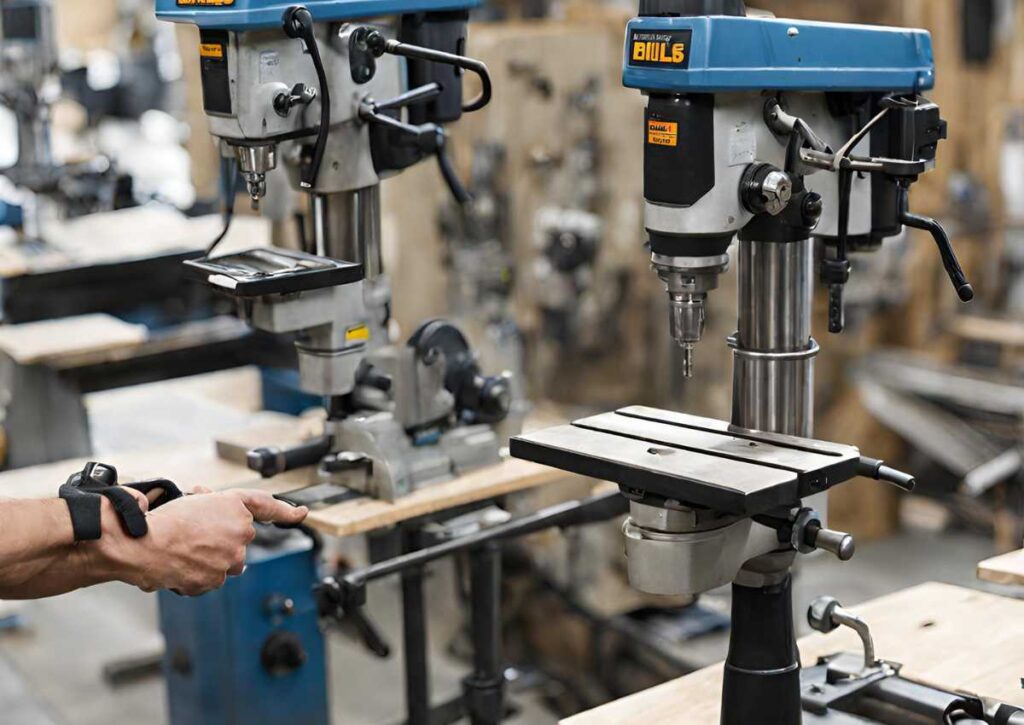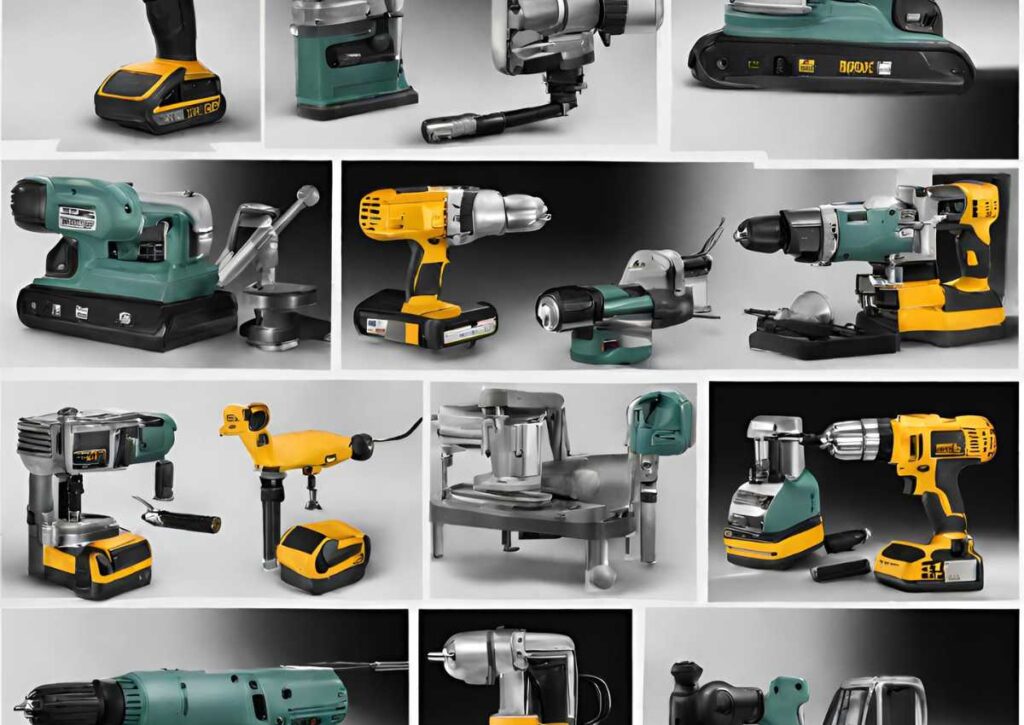Spot drills and center drills may seem similar, but their roles in machining are as distinct as chalk and cheese.
Spot Drill vs Center Drill: A spot drill creates a small indentation as a guide for drilling larger holes, while a center drill prepares a precise starting point with a conical hole for accuracy in drilling operations.
Have you ever pondered the disparity between these seemingly identical tools?
Join me as we embark on a journey to unravel the mysteries behind spot drills and center drills, understanding their unique purposes and when to employ them for impeccable machining.
Understanding Spot Drills and Their Purpose
Let’s start with spot drills—small yet mighty tools that play a pivotal role in machining tasks. Picture this: you’re preparing to create a precise hole in a workpiece.
Enter the spot drill, designed to create an initial depression or dimple at the exact spot where you plan to drill.
This indentation acts as a guide, preventing the drill bit from wandering and ensuring accuracy when creating the final hole.
When Must I Use a Spot Drill?
Whenever precision is your top priority, a spot drill is your trusted companion.
Its primary purpose lies in enhancing accuracy by creating a starting point for the drill bit, especially in scenarios where precision is non-negotiable.
Think of it as laying the groundwork for a flawless outcome.
Deciphering Center Drills: Their Role and Functions

Now, let’s shift our focus to center drills, often mistaken for spot drills. While they might share a few similarities in appearance, their purposes diverge significantly.
What is a center drill used for?
Center drills serve a different purpose altogether. Their main job involves creating a divot or a pilot hole for accurately positioning the subsequent drill bit.
Unlike spot drills, center drills are more adept at preparing workpieces for lathe operations or ensuring precise alignment for secondary drilling processes.
Spotting the Differences

The geometry
Spot drills usually have a smaller included angle, typically 90 degrees, while center drills sport a larger angle, often around 120 degrees.
Purposeful Depths
Spot drills create shallow dimples, whereas center drills can manage deeper holes with ease.
Choosing Between Spot Drill vs Center Drill

Spot Drill Scenarios
Picture this: You’ve got a project requiring absolute precision. That’s where spot drills shine.
When you want your drill bit to stay put without any slipping or wandering, the spot drill is your hero. It’s your best bet for high accuracy and smooth operations.
Center Drill Moments
Now, let’s say you’re working on tougher materials like metal. That’s when center drills strut their stuff.
They’re tough enough to handle the hard work of machining harder materials and create a reliable starting point for your drilling adventure.
Clarifying Common Queries
Spot drill or center drill substitute?
While they may seem interchangeable, each tool has its sweet spot.
Using a center drill as a spot drill might work in a pinch, but it might not offer the same pinpoint accuracy for intricate workpieces.
Drill Chuck or Collet Chuck for spot drills?
For spot drills, a collet chuck might be your best bud. It provides a firmer grip, reducing slippage and ensuring precise results.
Spotting Drill’s Use
When you need to prep for a larger drill, the spotting drill is the bridge between accuracy and efficiency, creating a guide for the main event.
Center Drill’s Sweet Spot
These babies are perfect for ensuring your hole starts in the right spot, especially in tough materials where precision is everything.
Conclusion
In conclusion, while spot drills and center drills might seem interchangeable at a glance, their specific purposes set them apart.
A spot drill is the maestro of precision, setting the stage for accurate drilling, while a center drill takes charge of alignment and pilot holes in more intricate machining tasks.
Remember, the devil is in the details when it comes to machining precision.
So, the next time you’re at the helm of a machining project, consider the unique roles these drills play, ensuring a gargantuan difference in the quality of your work.
Understanding the nuances between spot drills and center drills equips you with the knowledge to make the best choice for your machining endeavors. Happy drilling!
FAQs
What’s the primary purpose of a spot drill and a center drill?
A spot drill is used to create a starting point for drilling, while a center drill prepares the workpiece for accurate drilling by making a small divot for the drill bit to sit securely in.
How do spot drills and center drills differ in their design?
Spot drills have a sharper angle and are used to create a small indentation, while center drills have a more gradual angle and create a conical hole for better accuracy.
When is it best to use a spot drill versus a center drill?
Use a center drill when high precision is required and a spot drill when preparing a surface for drilling larger holes to avoid bit wandering.
Can a spot drill and a center drill be interchangeable?
While they serve similar functions, they have distinct designs for different drilling needs, so they aren’t always interchangeable.
What benefits do spot drills and center drills offer in the drilling process?
Spot drills help prevent drill bits from slipping, while center drills aid in creating a precise starting point, contributing to overall drilling accuracy.
Also Read
Exploring the Versatility of Aircraft Drill Bits: Everything You Need to Know









